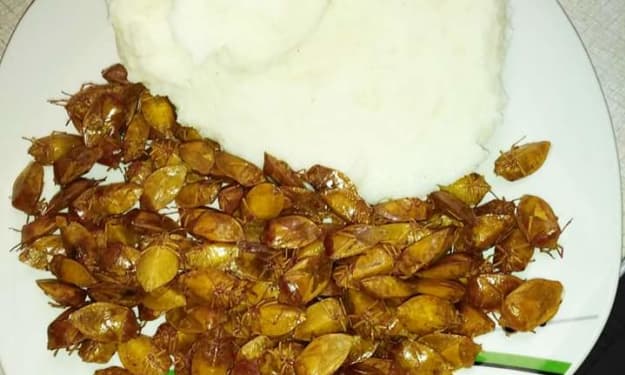
Mmm, nothing beats a freshly brewed espresso in the morning. For some people, coffee can be the amount a person should have, and if you're one of those lucky ones who can't stop loving early morning espresso today, then you'll be pleased to know that you'll find other approaches to making espresso.
There are many options for brewing coffee - from decorative foam to a French press. In this article, we offer ten of our top tips and methods for making espresso. Enjoy your future cup of warm Joe!
1. Decorating your own latte
With a few exercises, everyone in your house can really decorate their coffee in a way they almost certainly imagined only baristas could do. Baristas make searching very easy, and if you need to do so, you can also get great and beneficial effects - especially considering the fact that you are not a barista who is currently in a hurry to complete four jobs without delay.
The trick is to work with the milk and make sure it's frothy without any massive bubbles and then pour it into the coffee cup at an angle.
2. Get fresh espresso from whole beans
Don't use ground coffee. Buy fresh young beans. Most coffee vendors never bother with dates if the beans happen to be packaged—perhaps the beans were left there for months after picking. Fresh new coffee goes out pretty quickly. To find refreshing beans, your best bet is to research espresso vendors, and many coffee vendors roast them there, which means fresher espresso makes for a great drink.
Pre-roasted espresso beans also mean that the beans release much more carbon dioxide, which means that the gases that are released remove extra flavor from your coffee than freshly ground and roasted beans.
3. Use good quality drinking water
The quality of your drinking water depends on when the time comes for you to brew your own espresso. Difficult-to-drink water rich in extra minerals won't at the same time bond with your coffee that brews that ends with a weak espresso and not what you were hoping for. Even worse, using this high mineral water can lead to limescale buildup in your coffee maker. If you use this type of water, you will definitely need to constantly descale your device, which is something you don't want.
Heavily filtered water can also cause other problems every time you brew coffee, but lightly filtered water is ideal. Also, the most favorable water temperature for brewing espresso is between 88 and 94 degrees Celsius.
4. Cold brew methods for a unique espresso taste
Making cold espresso is a great solution if you love iced coffee and want to avoid buying expensive iced coffee.
You can find many ways to make espresso that can be frozen, but in addition, there are devices that make it doable. The reward is that this method eliminates the acids that coffee provides. This process also allows espresso drinkers to enjoy a range of flavors, although some dislike it due to its lack of acidity.
Alternatively, you should use a specific jar called a mason's jar. It's very simple - you just get your espresso, pour it into a jar, then pour cold drinking water, then put the water in the fridge for 12-24 hours. When fully cooked, simply strain the grounds and serve over ice. Try it!
Also, if you want to sweeten it up, add caramel syrup or something similar.
5. Measure your espresso
When you start brewing espresso, determine what proportion of the espresso you measure out is the strongest and which person can be the weakest, so you get a good brewing experience without weakening it or making it too strong for your preferences.
The most common ratio is 1 liter of water to sixty grams of coffee, and the best way to get this is to easily evaluate espresso on a set scale, but you can also measure it by simply measuring it. sixty grams using a spoon.
6. Pre-infusion or maybe bloom
Usually make sure you get rid of the carbon dioxide from the ground espresso, otherwise your drink will probably be weak. If you have a coffee machine, make sure it's actually purchased from where it's listed and make sure it's on at all times.
Espresso flowers are popular in coffee shops. It's really designed with the roasting method and the heart causes the carbon dioxide to be captured from behind the beans and captured. At the end of the firing, the gases are gradually removed. This is called "degassing". Preferably, if you use freshly roasted beans, the coffee may taste better than roasted and ground beans that have been left untouched for several days.

7. Preparation and dilution for weaker espresso
If you want to brew coffee, that's fine, don't brew it too long, just increase the amount of coffee you can drink now. If you still like it a little weaker, then just don't brew it for a shorter time, but rather brew it effectively and then dilute it to drink later.
8. Recommendations for using filter paper
If you choose to use filter paper to brew ground espresso, carefully pour scalding water over the filter paper to make sure it is damp just prior to use. This can eliminate the chance of getting that paper/cardboard taste in your mouth that you could get if you just poured in more water than coffee grounds if the paper dried before you start. If you pre-wet the paper, you clean it and get rid of the taste of the paper, which means you can still get a great tasting cup of coffee.
When you brew a cup of espresso with this strategy, pour the new water over the coffee grounds in a circular motion so that the drinking water gradually flows out of the pot through the coffee. This is indeed called flowering. Continue pouring in more water slowly but surely more than the ground coffee, give it time to seep out, and then wait for the coffee to collect at the bottom of the pot.
9. Flavored coffee
If you want your coffee to have unique flavors, such as some cinnamon, nutmeg, vanilla or almond extracts, add all of these extracts to your product or milk. Sprinkle your coffee with cinnamon or nutmeg, or you can even sprinkle with other floor spices like cardamom for a coffee that's a lot more spicy and different from what you know.
10. Maple syrup
As an alternative to flavored and sweetened coffee, you can always replace the sugar with maple syrup.
Thank you So much for you to reading till the end, and please kindly to support me as you could, I would be appreciate it. Have a great day:D
About the Creator
Eful
Hi there, I am Syaefullah Nur from Indonesia. I am reader and now I try to providing my best articles for you guys. Enjoy it;)






Comments
There are no comments for this story
Be the first to respond and start the conversation.